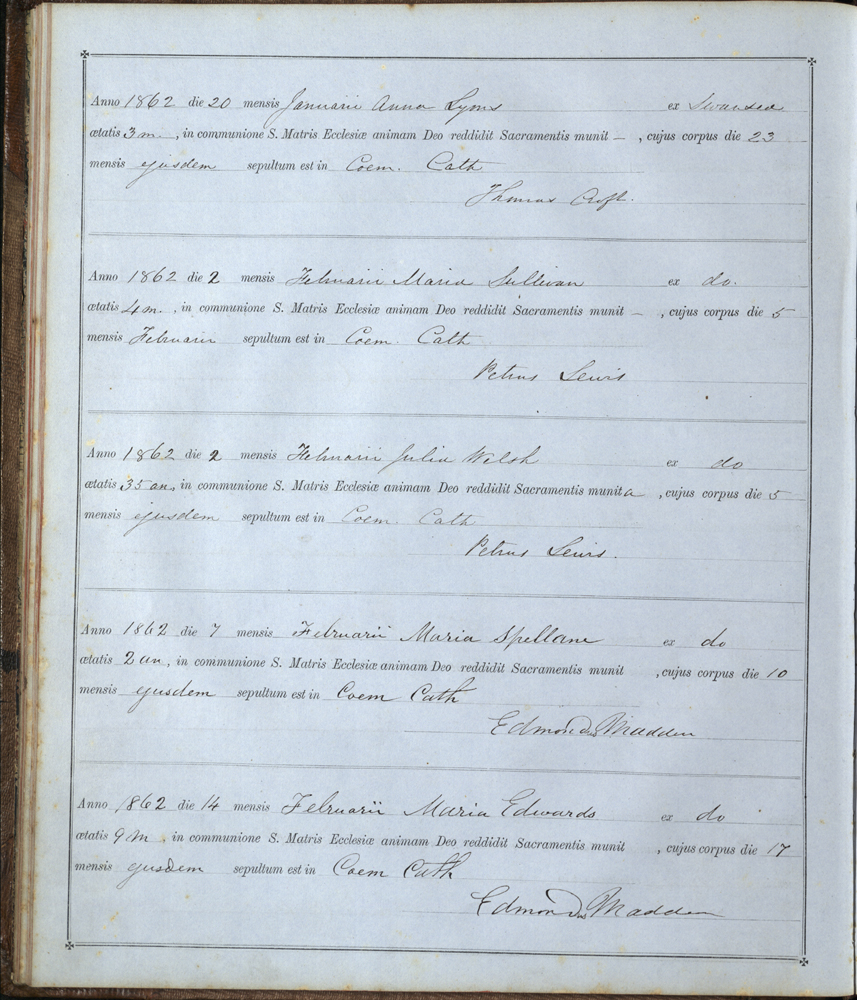While reading Latin is not necessarily straight forward, and like all languages, it takes time to master; reading Latin in the collection is actually quite simple.
You will encounter Latin mostly in official documents like registers of births, marriages or deaths. Since these documents are mostly formulaic, it is more a matter of knowing the format, rather than being able to read the Latin.
By knowing the key words for ‘son’ – ‘filius’ and ‘daughter’ – ‘filia’. It is fairly easy to decipher the meaning of a Baptism record.
A record reading
| Sara | filia | Henrici BLOGGS | et Anna uxor ejus | baptizata fuit |(date in Latin) | Anno Pdo. | 1714 |
Would read in English as
| Sara, | daughter of | Henrici BLOGGS |and his wife Anna | was baptised |on (date) | in this year | 1714 |
By looking at how the above example is divided up, you can see that most of the Latin is actually not necessary to pulling important information from the register. Simply by pulling Sara, filia, Henrici BLOGGS, Anna and the date of the baptism, you can tell who was being baptised, what gender they were, when and who their parents were.
Naturally writers could provide less, or more information on any given register, and sometimes the words make it more difficult to read, but you can still look for the basic format within a more flamboyant paragraph. Any Latin words you cannot read, it’s a good idea to ask the Archivists, as they’ve probably encountered the word before, and can explain it to you.
